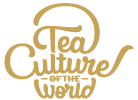The Great Debate – should milk go in the cup before or after pouring the tea?
There are few topics that are commonly argued upon or widely admired at different times of the day – often being a conversation over a cup of tea. Whether it's during early morning or late afternoon, a discussion over a cup of tea has been common. But often, one question does come- do you put milk in first or after the tea is poured?
At Tea Culture of the World, we get the sentiments behind this question. Tea is not just a drink. It's an age-old habit and the answer to this question is, there is no right or wrong.
Where the Tradition Started - 17th century Britain
In order to gain insight into the milk-first or tea-first controversy, we have to go back to 17th century Britain. At that time, teacups were more fragile than the ones used today. Hot milk was poured into them to warm them up before adding the hot beverage. With time and introduction of sturdier better cups, this process changed.
The Milk-First Argument
Adding milk first permits an even heat distribution, particularly when consuming strong black teas such as Assam or English Breakfast ones. Milk proteins are sensitive to extreme temperature changes, and some claim that hot tea poured over cold milk carefully warms it without curdling, retaining the smooth texture. Those who prefer this method additionally assert that beginning with milk enables greater colour and flavour control. As the tea is added in increments, it's simpler to halt pouring once the right colour is achieved, giving us a balanced cup that's mellow and blended. A perfect drink for people who like their tea soft and soothing.
The Tea-First Tradition
And then there's the tea-first people. Pouring tea first means you can test its strength before adding milk. It also shows deference to the brewing process, particularly if using loose leaf tea, where every note and every nuance matters.
At Tea Culture of the World, our high-end blends like the full-bodied English Breakfast to the ethereal Darjeeling Spring are meant to be enjoyed in their natural state. Add milk later to enjoy the tea as it was meant to be and then customize its creaminess to your preference. The aroma, color, and transparency are further enhanced, allowing total control over their beverage.
What Science Says
It's not merely a matter of culture or taste, there's actual science behind the milk-and-tea debate. Chemical reactions take place when hot tea and cold milk come into contact. If the milk is poured into boiling tea (milk-after), its proteins can break, subtly changing taste and texture. Adding milk first (milk-before) allows it to heat slowly, remaining more stable in terms of composition.
That being said, the variance is slight and often acceptable. What is more important is the tea you're drinking, its quality, the strength of the leaves, and steeping duration. Whether you're brewing with our loose leaf tea assortment or with high-grade tea bags, begin with an excellent blend, and your cup will never let you down.
Milk and Iced Tea: A Different Pairing
Well, milk isn’t just for hot cups of tea. In most parts of Asia, one can find iced tea that is made with milk for a creamy sweet variation. Iced tea, for example, uses super-brewed tea, condensed milk, and ice to make a dessert-like drink that's both indulgent and refreshing.
If you want to explore one at home, use our Masala Chai blend as a starting point. Brew a strong cup, chill it, and serve over ice with a splash of milk or cream. The end result is a spiced iced tea that's both bold and comforting. It doesn't matter if you add the milk before or after, here, the layers will meld nicely once it's been stirred.
At Tea Culture of the World, we believe that how you make your tea is just as important as the tea itself. Our blends are crafted to give one just the desired flavour and fragrance that one desires from a brewing cup offering you a journey that rejuvenates the senses with every sip, whether you're a milk-first or a tea-first connoisseur.
So, does the milk come before or after the tea? The answer lies in your taste, your habits, and how you prefer the tea to be. Most important is the experience: the steeping, the sip, and the quiet in between. No matter which side of the argument you're on, the quality of your tea determines the flavour of the whole cup. If you're opting for fragrant loose leaf tea, convenient tea bags, or getting adventurous with cold iced tea, begin with blends that show authenticity, balance, and attention to detail.
At Tea Culture of the World, every tea we provide is an ode to tradition, craftsmanship, and option. And maybe that's the actual solution to the argument; there's no incorrect method to drink tea, provided it gives you solace, togetherness, and a bit of peace in your life.


